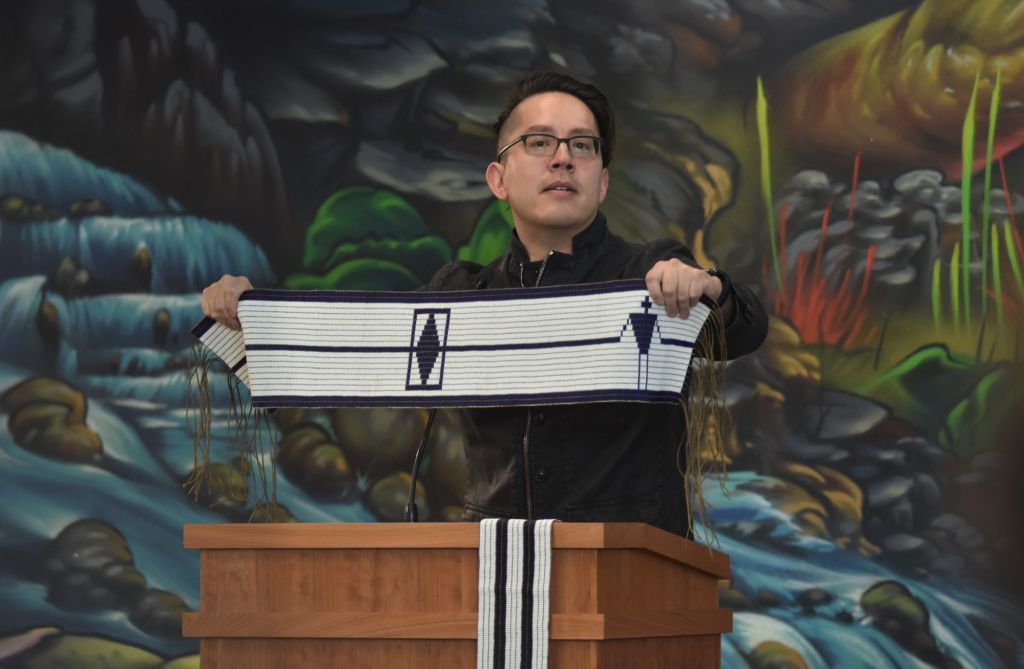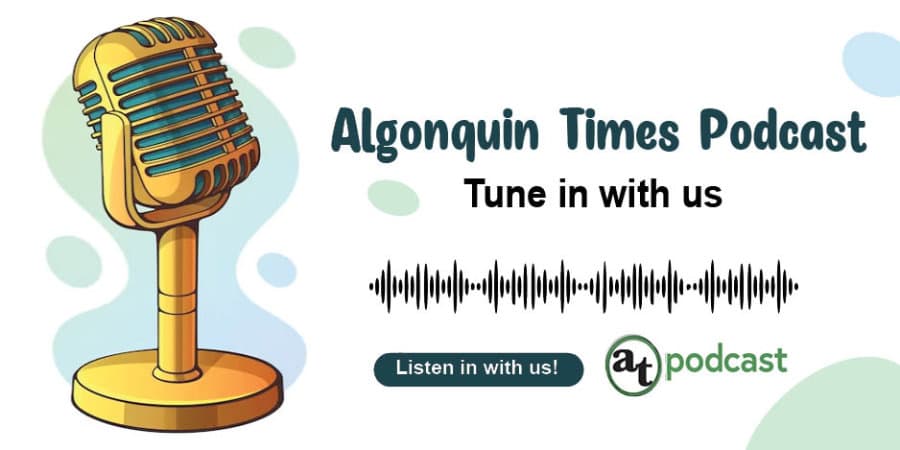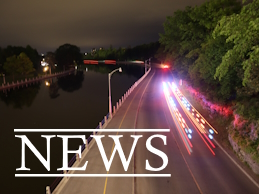Mural vandalism brings college community together

Students, faculty and community members gathered quietly around a podium at the foot of the three-storey Indigenous mural in Algonquin College’s DARE district on the afternoon of Feb. 4.
The crowd, so large that it filled the surrounding stairs and the balconies overlooking the space, was there for the “Gather to Heal” ceremony in honour of the mural that had been defaced with yellow paint nearly a week earlier, on Tuesday, Jan. 28.
Ron Deganadus McLester, Algonquin’s vice president of truth, reconciliation and Indigenization, chose to leave the vandal’s damage uncovered, for the public to see.
“There is no reason to hide this from the community,” he said. “There is no reason to protect people from it happening. I think we need to shine a light on it and acknowledge it, and so that’s what we’ll do.”
McLester closed the ceremony with a message of coming together as a sign of strength: “In one voice, we can tell the world that we do not stand up for this.”
As the crowd moved into Nawapon to finish the healing ceremony with a Round Dance, the yellow paint remained – allowing the process of mending the mural’s physical damage to begin.

According to Manon Levesque, associate director of Algonquin’s facilities operations and maintenance services, the extent to which the college has dealt with vandalism so far has been removing graffiti. In this case, the team had to turn to another in-house expert for the first time.
Terry Quinlan, a professor of conservation in applied museum studies with over two decades of experience in the field of mending material culture, agreed to use his expertise to help the college.
“For me, I think this particular mural holds an awful lot of significance, not only to those First Peoples, but as an employee,” he said.
For Quinlan, the next step is to uphold his field’s code of ethics before he can begin any physical restoration by applying solvents that will remove the yellow paint.
This means conducting a full photo and written documentation of the mural’s damaged state. Quinlan must then present a treatment proposal to Shalak Attack and Bruno Smoky, the artists who created the mural in 2018. His proposal will outline the risks associated with the mending process.
The risks could be higher if he does not act sooner rather than later, explains Quinlan.
“When the paint was applied by the vandal, in some areas its quite thin,” he said. “That’s extremely easy to remove. It would take minutes for me to take that off.”
Quinlan warned that the areas of the mural that have a thick layer of paint are an issue. “When you apply the solvent, you’d have to then extend the amount of time you leave the solvent on,” he said. “And that poses a risk to the varnish and to the original mural underneath.”
According to Michael Grabiec, supervisor of operations services, ensuring the restoration process is done correctly is a way for the physical resources team to stand by those affected.
“This is not going to stop the Indigenous community, it’s not going to stop us,” he said. “Adapt and overcome.”
Two days after the college joined to heal, Quinlan put on his harness, got on a lift, and got to work preserving the art.
Although it will be a long process, Quinlan is happy to do his part in the best way he knows how. “It often requires a considerable amount of patience and it isn’t about speed,” he said. “It’s about getting it right.”
According to McLester, Shalak and Smoky have committed to coming to the college in February to make any restorations needed on their part.
While the Indigenous mural will eventually be mended, McLester believes the incident is telling of what still needs to be addressed in the college community.
“Placemaking, providing space is important,” McLester said. “But this exemplifies that there is still work to do to address systemic change as it relates to Indigenous presence, Indigenous inclusion and just safety for Indigenous people, art, artifacts and knowledge.”








